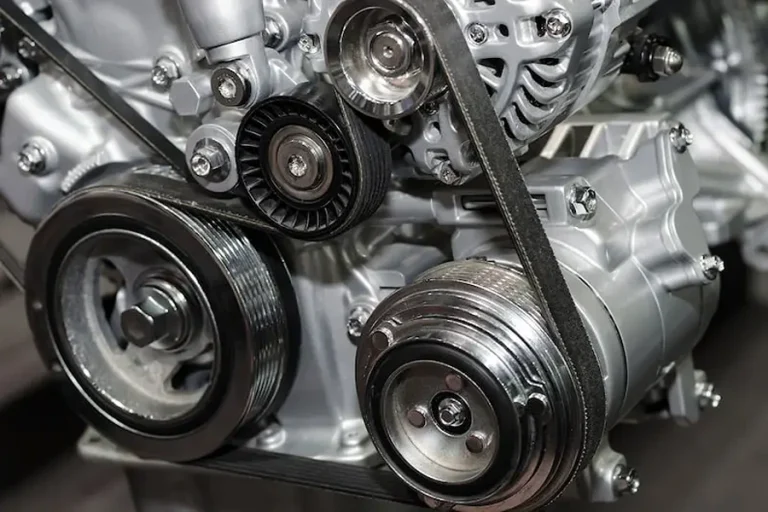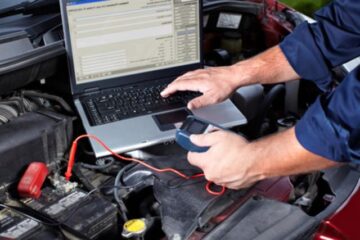Difference between Serpentine Belt and Timing Belt
Understanding the inner workings of your vehicle can be a daunting task. Yet, it’s essential to grasp the basics for effective maintenance and troubleshooting. One area that often causes confusion is the engine’s belt system. You may have heard of the serpentine belt and the timing belt, but what are they? What roles do they play in your vehicle’s operation? In this article, we’ll delve into the differences between the serpentine belt and the timing belt. We’ll explore their functions, signs of wear, replacement tips, and more.
Understanding the Serpentine Belt
The serpentine belt, also known as the drive belt or accessory belt, is a long, winding belt in your engine. It’s easily visible when you open the hood, typically located at the front of the engine. This belt is responsible for powering various accessories in your vehicle. These include the alternator, power steering pump, and air conditioning compressor.
Function and Importance
The serpentine belt plays a crucial role in your vehicle’s operation. By transferring power from the engine’s crankshaft, it drives several peripheral devices. Without a functioning serpentine belt, these systems would fail, impacting your vehicle’s performance and comfort.
Common Signs of Wear and Replacement Tips
Like any component, the serpentine belt can wear out over time. Signs of wear include visible cracks, fraying, or a squealing noise when the engine is running. If you notice these signs, it’s time to consider a replacement.
- Inspect the belt regularly for signs of wear.
- Listen for unusual noises from the engine bay.
- If the belt looks worn or makes noise, consult a professional.
- Always replace the belt at the manufacturer’s recommended interval.
Understanding the Timing Belt
The timing belt is another critical component in your vehicle’s engine. Unlike the serpentine belt, it’s often hidden under a protective cover. The timing belt synchronizes the rotation of the crankshaft and camshaft. This synchronization is crucial for the engine’s valves to open and close at the correct times.
Role in Engine Performance
The timing belt is integral to your engine’s performance. If it fails, the engine’s timing can be thrown off, causing severe damage.
Symptoms of Wear and Replacement Guidelines
Timing belt wear or failure can be harder to detect due to its location. However, symptoms can include rough idling or a non-starting engine. If you experience these issues, it’s essential to have your timing belt inspected.
- Regularly check your vehicle’s mileage against the manufacturer’s recommended replacement interval.
- If your engine idles roughly or won’t start, have a professional inspect the timing belt.
- Always replace the timing belt at the manufacturer’s recommended interval to prevent severe engine damage.
Serpentine vs Timing Belt: Visual and Functional Differences
While both the serpentine and timing belts are essential to your vehicle’s operation, they have distinct differences. Visually, serpentine belts are usually wider and have multiple ribs on the inner surface. On the other hand, timing belts often have teeth on the inside to match gears on the crankshaft and camshaft. Functionally, the serpentine belt powers various accessories, while the timing belt ensures the engine’s valves open and close at the right times.
- Serpentine belts are wider, with multiple ribs for increased surface contact.
- Timing belts have teeth on the inside to match the engine’s gears.
- The serpentine belt powers accessories like the alternator and air conditioning compressor.
- The timing belt synchronizes the crankshaft and camshaft rotations for proper valve operation.
Lifespan and Maintenance: What to Expect
The lifespan of both serpentine and timing belts can vary based on several factors. These include the type of vehicle, driving habits, and environmental conditions. Typically, a serpentine belt lasts between 60,000 to 100,000 miles. Timing belts, on the other hand, usually need replacement every 60,000 to 90,000 miles. However, these are just averages. Make sure to check your vehicle’s owner’s manual for the exact maintenance schedules. It’s got all the details you need to keep your car running smoothly.
Serpentine Belt Maintenance
Regular inspection of your serpentine belt is crucial for maintaining your vehicle’s performance. Keep an eye out for any signs of wear, like cracks, fraying, or a shiny appearance. If you notice any of these signs, it’s time to replace the belt. Ignoring these signs can lead to belt failure and vehicle breakdown.
Timing Belt Maintenance
Unlike serpentine belts, timing belts are often hidden under a protective cover. This makes visual inspection more challenging. However, if you notice symptoms like rough idling or a non-starting engine, it could indicate timing belt wear. In such cases, seek professional help immediately to avoid severe engine damage.
Replacement Costs and Considerations
The cost of replacing serpentine and timing belts can vary widely. It depends on the make and model of your vehicle, labor costs, and whether any other parts need replacement. It’s also important to consider the potential cost of not replacing these belts. Ignoring worn-out belts can lead to costly engine damage and vehicle breakdown.
Cost of Serpentine Belt Replacement
On average, the cost to replace a serpentine belt ranges from $200 to $350. This includes both the cost of the belt and labor. However, if other components like tensioners or pulleys need replacement, the cost can increase.
Cost of Timing Belt Replacement
Replacing a timing belt is typically more expensive. It can cost anywhere from $600 to $1300. This is due to the complexity of the job and the need to disassemble parts of the engine to access the belt.
The Consequences of Belt Failure
The failure of either the serpentine or timing belt can have serious consequences. These can range from minor inconveniences to major engine damage. Understanding what happens when these belts fail can underscore the importance of timely maintenance and replacement.
When Serpentine Belts Fail
If a serpentine belt fails, it can cause the loss of power steering, air conditioning, and the alternator. This can leave you stranded on the road. Overheating can also occur if the water pump is driven by the serpentine belt.
When Timing Belts Fail
A timing belt failure can be much more catastrophic. If it breaks while the engine is running, it can cause severe engine damage. This is especially true in interference engines, where a broken timing belt can lead to bent valves and damaged pistons.
DIY vs Professional Replacement: What You Should Know
When it comes to replacing serpentine or timing belts, the complexity of the task can vary. Some car owners may feel comfortable replacing these belts themselves, while others may prefer to leave it to professionals. Replacing a serpentine belt can be a relatively straightforward task for those with some mechanical knowledge. It typically involves loosening the tensioner, removing the old belt, and installing the new one following the correct routing diagram. On the other hand, replacing a timing belt is a much more complex task. It requires precise alignment of the crankshaft and camshaft and often involves removing many other engine components. Unless you’re an experienced DIY mechanic, it’s usually best to leave this job to professionals to avoid potential engine damage.




